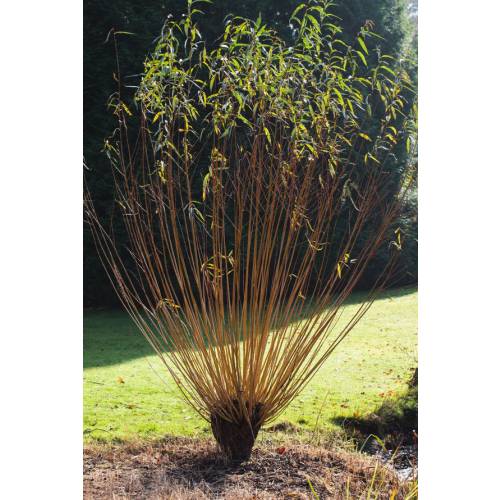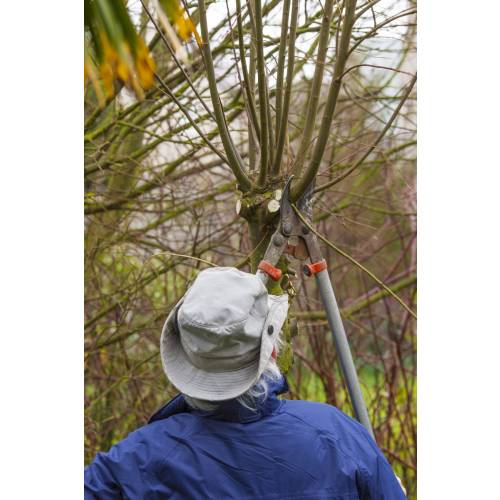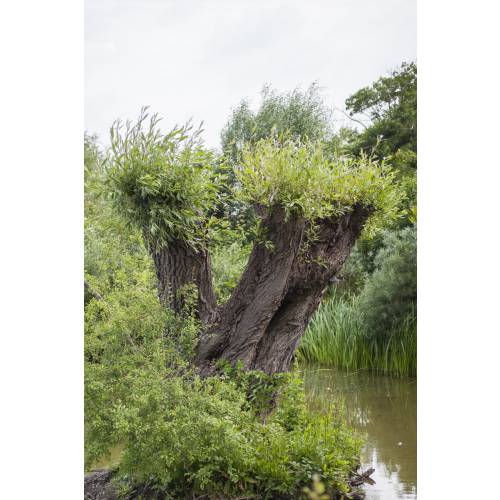
Know everything about pruning
Shape a pollarded tree
- Details
-
This is an ancient method used to keep a tree small which was often seen in the countryside and makes a comeback in our gardens.
The principle
A pollarded tree (also called lopped tree) is a tree which has a classic trunk but is pollarded regularly, always at the same height’s level. The tree forms regrowth which make its head bigger. Originally, a pollarded tree was used to get additional fodder. But it is also a decorative way of pruning which is full of advantages for our gardens...
Trendy
A pollarded tree has real advantages. The space it occupies is constant that is to say that it never becomes cumbersome. Even in a very small garden you can grow a pollarded tree. Its shape is very graceful even in winter. Birds love its dense branches to find shelter. As the tree does not have high branches, it does not represent any danger during storms and strong wind.
How to proceed?
Plant your chosen tree making sure that it can withstand the pollarding method. Let it grow until the trunk reaches 5cm in diameter. At this point, cut the trunk at the wished height between the end of January and mid-April. Often a height of 1.50m is ideal: the head is easily accessible when pruning becomes necessary and the branches are not too low. You can cut the trunk between 1m (it is then more bulky, as very low) and 2m (but the branches are not so easily reached). Then cut all the branches along the trunk and let nature work. Numerous new branches will appear underneath the trunk-end. Two years later, cut all the regrowth back (leave 2cm at each of their base) and proceed the same way every two to three years. That’s all there is to it!
Which species?
All the trees reacting well to harsh pruning and forming beautiful new shoots can be pollarded. Willows are the most common trees as it even brings out their coloured, new bark. Poplars, Lagerstroemias, Alders, Eucalyptus and Maple trees are well suited to this type of pruning. Oak trees, Lime trees and Ash trees can also be pollarded but it needs to be done less often (only every 4 to 5 years) and with great care.
Evergreen trees (Magnolias…) and conifers are not suitable for pollarding which must not be considered on these species.
Good to know
A pollarded tree can live as much as 200 years if you prune it at least every three years - Photos (5)





